Tatarstan announces new horse breeding development programme
Farmers need subsidies and promotion of rural lifestyle
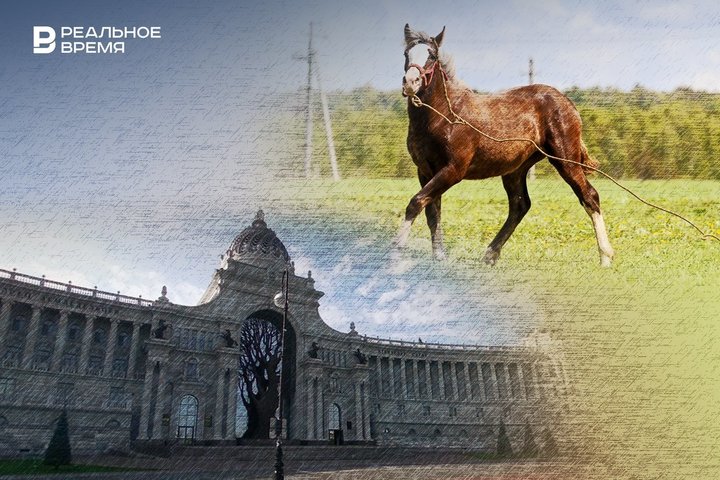
On 30 August 2025, Kazan will host the third horse race for the Russian President's Prize. On 24 June, Vladimir Putin signed a corresponding order, and a month earlier, Tatarstan Rais Rustam Minnikhanov announced a new republican programme for the development of horse breeding, the goal of which is to increase the horse population from the current 30,000 to 50,000 horses by 2030. In an exclusive interview with Realnoe Vremya, new head of the municipality Yegor Tarnavsky recently spoke about how this problem is being solved in the Novosheshminsky District where the only stud farm in the republic for breeding Orlov horses operates. Read more about the state of horse breeding in Tatarstan, the problems of horse breeders and the measures that are necessary to implement the task in the new report of our newspaper.
“We need to decide what kind of horses we need”
At a meeting with activists of Kaibitsy and Buinsk Districts at the end of May, Rustam Minnikhanov announced the preparation of a new programme to support the development of horse breeding, emphasizing that this area is not developed in private farms. The press service of the governor of the Republic of Tatarstan reported that the Ministry of Agriculture of the Republic was instructed to develop options for supporting this industry.
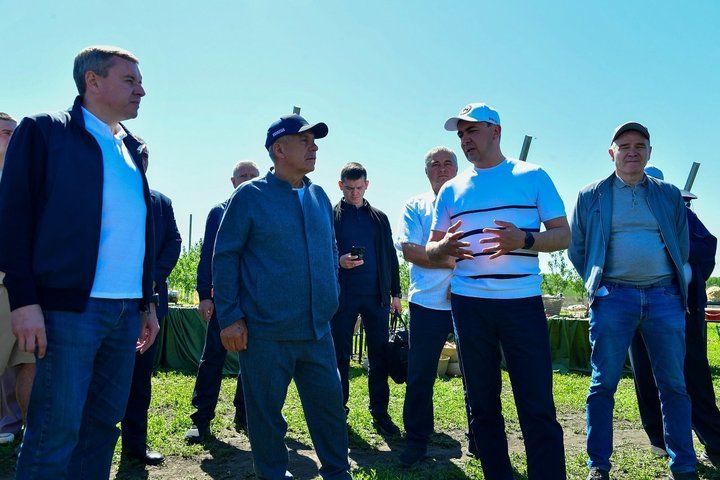
“First of all, we need to decide what kind of horses we need,” chairman of the Association of Farmers and Peasant Farmsteads of Tatarstan Kamiyar Baitemirov commented on these plans to Realnoe Vremya. “In order to only represent them at Sabantuy, or still, so that they take part in economic activity, are used for work and transportation, since today in the village there are still jobs that can be done by horse-drawn transport. Or we need horse meat products and kumys. Based on these tasks, we must fulfil the order of the rais of the republic. Well, and do not forget that our people have a genetic love for horses!”

Baitemirov noted that so far Tatarstan lags behind both Kazakhstan and neighbouring Bashkiria in terms of horse breeding. And he emphasized that the content and goals of the new horse breeding support program should, first of all, meet the needs of farmers, especially considering that more than two-thirds of all horses in the republic are kept in farms and peasant farmsteads. This means, he says, that not only officials but also those who keep horses and are directly involved in the development of horse breeding should be involved in drafting the programme.
But Kamiyar Baitemirov is cautious about the prospect of almost doubling the republican “herd” by 2025 — from 30,000 to 50,000 horses:
“Goals of this kind are achieved if supply and demand coincide. Perhaps, after all, we need to start this work not with words, but with deeds. In addition, the target program, if we are talking about pedigree horse breeding, should provide for the development of different breeds, and not just Tatar: heavy draft horses, racing horses. For each, it is necessary to develop a separate program within the general one, only then will success be achieved.”
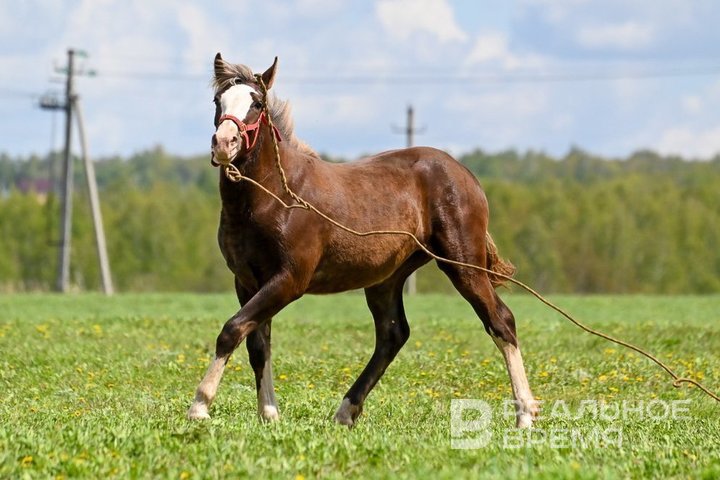
However, horse breeder Firzar Giniyatullin, son of the owner of Tyulyachi District’s Plemreproduktor, Sagit Giniyatullin, where, in addition to the Tatar horse breed, English, Arabian and pony horses are bred, believes that the task of increasing the Tatarstan “herd” to 50,000 is quite realistic:
“We had 300 horses on our farm, and now almost 500. We receive subsidies from the budget regularly, and there is also demand for sports horses. But we receive subsidies from the Russian budget — we have Russian licenses for horse breeding,” he explained.
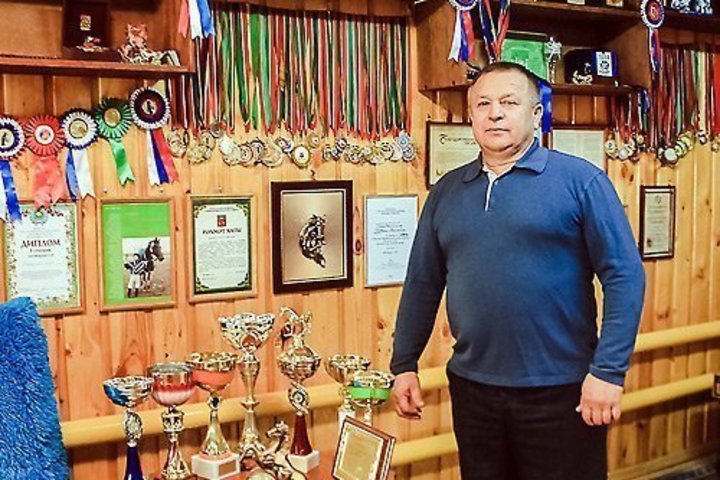
Tatarstan horses are in demand both in the DPRK and in Gazprom
As Realnoe Vremya has learned, on 6 May, Rustam Minnikhanov met and discussed ideas for developing horse breeding in Tatarstan with the famous horse breeder from the Novosheshminsky District, Nikolai Skokov, who heads the Tatar Stud Farm No. 57. The same Skokov who specializes in breeding the famous Orlov trotters and supplies horses to the DPRK regiment, as well as as gifts to some heads of CIS countries.
“We are the only ones in Tatarstan who export horses abroad. In addition to Korea, to Central Asia: Kazakhstan, Kyrgyzstan, Tajikistan, Uzbekistan,” Nikolai Skokov told Realnoe Vremya. “Several of our horses are in China and several in Germany.”
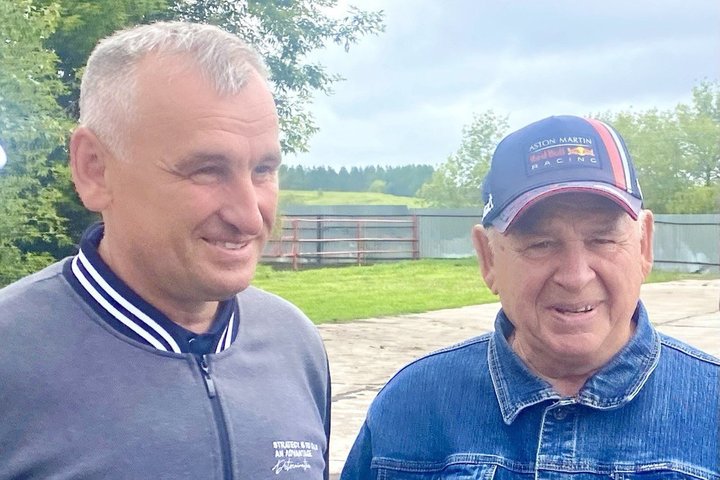
Today, his farm has more than 200 horses of this breed. In Skokov's stable in Novosheshminsk, there was even a legendary horse from the TV intro of Week News — a root horse in a racing troika named Skobar. Over 13 years of work at the stud farm, three champions of Russia and two Tatarstan derby competitors have been bred. “The horses of the stud farm were bought and presented to former President of Kazakhstan Nursultan Nazarbayev, as well as to Gazprom CEO Alexey Miller,” Nikolai Skokov told Realnoe Vremya.
In 2022, Nikolai Skokov presented the leader of Korea Kim Jong-un with his favourite — a 4-year-old Orlov stallion named Pepelny. Since then, the DPRK has purchased about two dozen horses of the same breed in Novosheshminsk. According to Skokov, the Koreans simply fell in love with this breed and are already breeding it as a national one. “Earlier, the entire officer corps rode Orlov trotters — both in the Civil War and in the Great Patriotic War. The Parade was held there in 1945,” noted Nikolai Skokov. “The breed is universal: it can carry generals and haul cannons.”
“The Orlov breed was developed in the 18th century — in 2026, the breed will be 250 years old,” noted Nikolai Skokov. “Over the years, the breed has not only been preserved, but several intra-breed types have formed within it. According to the names of the main stud farms: Khrenovskoy — where Count Orlov bred this breed. Perm Stud Farm is the Perm type, Moskovsky is its own type, Altai is its own. We are currently creating a program with the Institute of Horse Breeding to create a Tatar type of Orlov trotter in Tatarstan in the near future.”
The price of such a horse starts from 150,000 rubles and depends on the pedigree: genetics, achievements of parents, exterior and other factors. As Nikolai Skokov said, the breeding work is not just complex, but almost jewellery. Every year, a documentary breeding plan is drawn up at the stud farm. The Institute of Horse Breeding participates in the selection of pairs, conducting genetic research and making a verdict: who to mate with whom for the best offspring. The horse breeders are faced with the task of forming the main composition of the best horses and mares for breeding the breed.
“We conduct grading every year,” Skokov said. “We look at what young replacements to leave for the breeding stock, we work with lines and families. There are only 10 lines in the Orlov breed, we work with seven lines. This means that we have stallions of seven lines. And lines are a genetic code, it is described up to the seventh to tenth generation.”
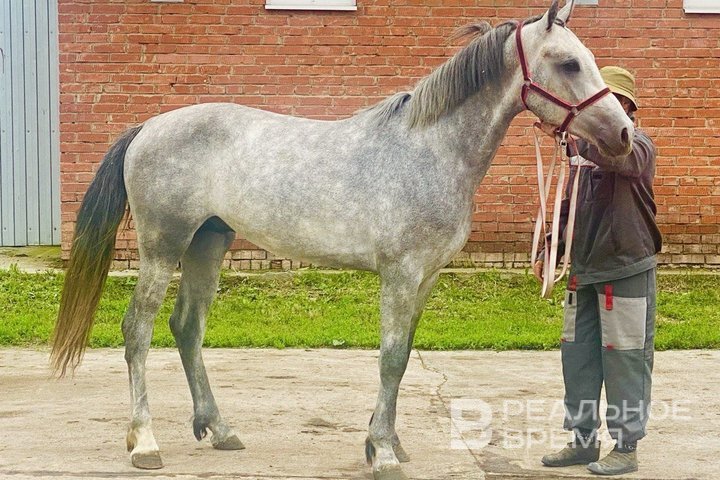
Each horse is included in the Institute of Horse Breeding database. In total, the Skokovs' farm has more than 300 horses, of which about 200 animals have passports. “We have 27 breeding families at our stud farm — no other stud farm in Russia has so many. A unique collection of breeding stock has been collected here,” said Nikolai Skokov. According to him, there is only one breeding farm left in Tatarstan — the rest are already breeding reproducers.
They are now preparing to work with North Korea on selection — to help the Koreans grow the Orlov breed in their country. When asked whether the demand for Tatarstan horses in the DPRK will decrease, Nikolai Skokov answers that, on the contrary, it will increase: “Otherwise, there will be inbreeding within the breed. But this way, we are, on the contrary, moving the breed forward.” Having delved into the issues of selection and polishing the breed, the Skokovs studied the world demand: “We already understood that we need to make a large horse — up to 170-175 cm at the withers. We bred them here so that they would continue to produce such large horses.”
Tatarstan, in his opinion, is a fertile region for horse breeding. “We have stalled, everything was focused on cattle, and today there are 900,000 head of cattle in the republic and only 30,000 horses,” the horse breeder complained.
The horse breeder supports the goal of the republican program — he sees the goal of increasing the livestock in the republic to 50,000 horses. “This is a serious program. Nothing happens for free. You need to understand how to do it, where to start. I believe that until we purchase breeding stock, our livestock will not grow sharply,” he noted. This is a long process, horses live for 30 years, produce for 15-20 years, and carry their offspring for 11 months, giving birth to one foal at a time.
Picture in numbers
So, in total, there are more than 30,000 horses of different breeds in Tatarstan — about the same as there were at the beginning of 2023, when they first started talking about plans to almost double their population.
“Currently, the number of horses in the republic is more than 30,000 horses, of which 8,900 are in agricultural organizations, 13,000 in private farmsteads, and 8,800 in farms,” Realnoe Vremya was told in the republican Ministry of Agriculture. “There are five breeding farms in the republic. Agrofirma Aktai in Aksubaevo District is engaged in breeding trotter breeds — Russian and American. Khuzangaevskoye in Alkeyevo District and Tatar Stud Farm No. 57 in Novosheshminsk — breeding the Oryol breed, Plemreproductor named after Giniyatullin S.Sh. in Tyulyachi District — Arab purebred and Tatar breeds, and the peasant farm Salakhov A.Sh. in Arsk District — a Soviet heavy truck.
According to the ministry, the largest number of horses of the Tatar breed are kept in the Leninogorsk peasant farm Nabiullin S.F. (344), Alkeevsky peasant farm Bakirov F.R. (214), Tyulyachi Plemreproductor named after Giniyatullin S.Sh. (223) and the Saba peasant farm Garipov I.F. (49).
The largest number of horses is kept in the Saba District (2,600), Buinsk (1,600) and Baltasinsky (1,600). However, according to the Ministry of Agriculture, in Baltasi and Buinsk Districts there was a slight decrease in the livestock, and in the Cheremshan, Drozhzhany and Chistopol Districts it decreased by more than 30%. At the same time, in the Leninogorsk, Tyulyachi, Rybnaya Sloboda and Arsk Districts, the number of horses, on the contrary, increased.
The Ministry reported that in 2024, six horse breeding enterprises produced and sold more than 328 tons of horse meat and products from it, and three producers — the peasant farm Fassakhov R.K. (Burunki village, Kaibitsky District), Kuleyeva E.V. (Yutazinskaya Kumysolechebnitsa settlement) and the Salakhov A. Sh. peasant farm (Sikertan settlement, Arsk District) — 42 tonnes of kumys.
“It’s a pity for the dream”
Six years ago, the official website of the Tatarstan Ministry of Agriculture and Food reported on head of the peasant farm Fanis Bakirov from the village of Akhmetyevo, Alki District, as one of the leading participants in the program to revive the Tatar horse breed. By that time, he, who started in 2012 with 50 pedigree horses purchased in Bashkiria, had his own herd of 300 heads. Now, as the horse breeder told Realnoe Vremya, he is forced not only to stop developing, but to completely end his business and the occupation that he considered his life’s work:
“I had 500 horses, now only 214 are left, and these will have to be handed over. Last year I didn't receive any subsidies for the development of the farm, although my application was accepted, and this year it's the same story. They didn't give any in 2021-2023 either. The ministry told me straight out: “Enough, they gave you a little bit earlier — and that's enough. We don't need your horses.” And we won't be able to prepare feed until autumn — and I don't prepare it anymore. We can't afford it — we transport feed 20 km, there are expenses every day. We need 10 tonnes of diesel fuel alone, and I'm already in debt. No one gives it. Last year we had a scandal: I borrowed money, as usual, but they didn't give me a subsidy, and I went broke.”
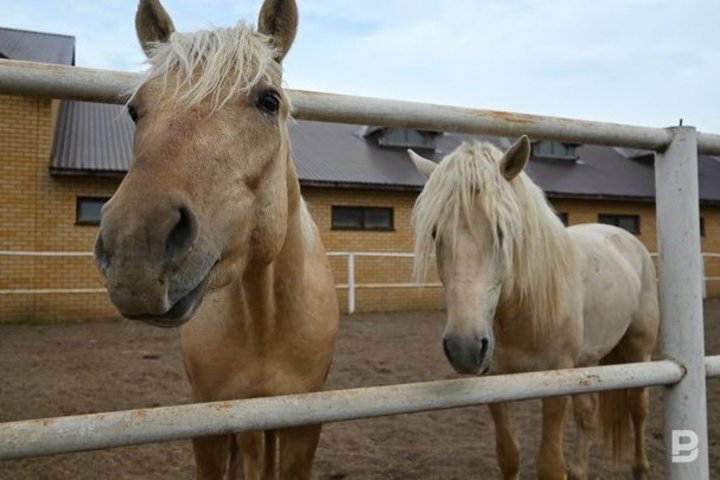
Bakirov recalls how he and other enthusiasts collected pedigree horses, how he received the State Prize for the revival of the Tatar horse breed as part of a team of scientists and horse breeders, and says that he feels sorry for the dream that almost came true, but even more sorry for the pedigree horses that will soon have to be slaughtered.
At a meeting with Rustam Minnikhanov, horse breeders told the governor of the republic which problems first of all need to be solved within the framework of the new program — a shortage of land for pastures, a shortage of veterinarians and stallions. They did not raise the issue of subsidies. Fanis Bakirov says that he would be glad to tell Rustam Minnikhanov about his problem personally, but does not have such an opportunity.
To prevent startups from being “eaten away”
Farit Nabiullin, who began to revive the Tatar horse breed at the same time as Fanis Bakirov, has a different view of the situation. In 2010, he opened a centre for the restoration of this breed in Leninogorsk District and started with 54 horses, and now he has 344.

He does not complain about the lack of subsidies, on the contrary, he says that it is easy to feed the horses. According to him, the farm is kept in herds, Tatar horses find their own food even in winter, under the snow. But social policy and the mood of villagers can really seriously affect the future of horse farms, he is sure:
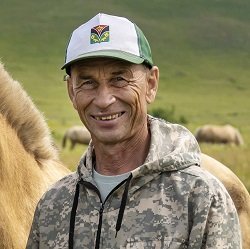
The horse breeder noted that even district officials “are doing nothing to interest young people in staying in the village”: “What’s the matter! Sabantuy was held in Kazan — all the best, most interesting, most fun — everyone was taken there. And it turns out: city dwellers get everything, villagers — on a residual basis. But we need to promote the rural way of life, say that it’s health, environment, good mood.” According to Farit Nabiullin, the number of horses is falling primarily in those areas where schools and maternity hospitals are closed, hospitals are “optimized,” and as a result, people lose incentives to live and work in the countryside.
He believes that the agricultural classes that are currently being created in rural schools will help change the situation. His farm has also allocated money to help create an agricultural class for horse breeding in a local school. Children will come to the farm to ride, learn how to care for horses, and feed them. It will be possible to enrol in the agricultural class after completing the fourth grade, when the study of subjects important for a future horse breeder begins — physics, chemistry, biology.
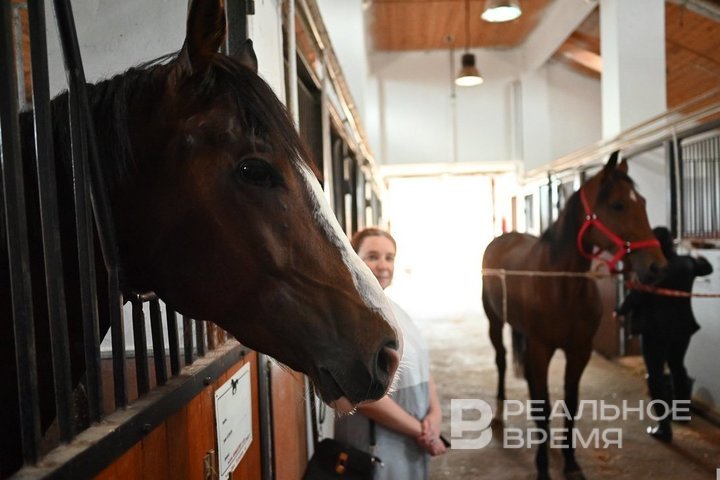
Realnoe Vremya's interlocutor criticized some of his colleagues who abuse state aid:
“I know a lot of farmers who open a peasant farm, run a start-up, “eat it up,” and five years later close the enterprise, open a peasant farm in the name of their wife and take a start-up again, live well for five years again, and then repeat everything with their grown-up son. These are hangers-on, consumers! And such aid does not lead to good results.
There is not enough cooperation here
In addition to sports and draft horse breeding, according to Farit Nabiullin, it is also important to develop meat production, but in the absence of normal cooperation, it is unprofitable for farmers to develop this area today:
“Buyers come, start bargaining, knock down prices. A consumer at the market pays, say, 700 rubles per kilogram, and we are paid 180 rubles for live weight — meat comes out to 360 rubles. And who profits? To avoid this, there must be on-site processing. I have been to Finland, Holland, France, Poland — they process everywhere, create cooperatives. And the profit remains with the horse breeders. And our farmers do not trust each other! Over the years, they have stopped trusting not only their neighbours, but also the state. They no longer trust their own brothers. This is the result of politics, the result of many years of educating young people in the spirit that the main thing is money, if you have it, you can do anything.”
The unprofitability of this area for farmers is confirmed by the figures. According to the Russian Statistics Service, in 2017-2024, the Volga Federal District became the leader in horse meat production, producing 39.2% of its total volume. At the same time, the decline in horse meat production in Russia in 2024 compared to the previous year was 38.9%.
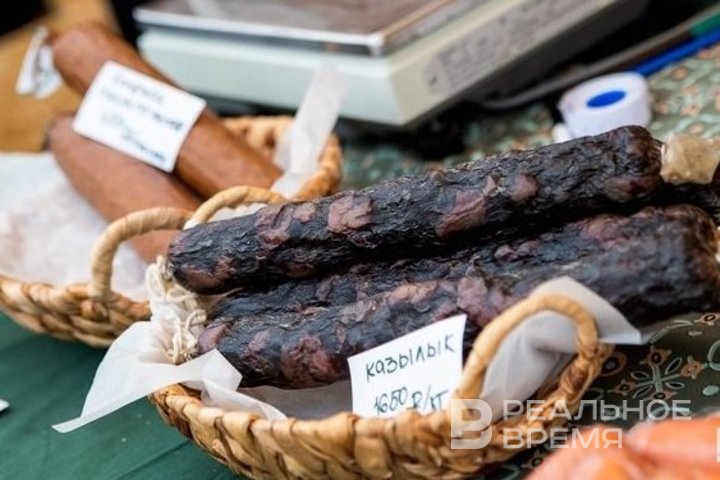
The leader in horse meat production in the Volga region is not Tatarstan but Chuvashia. In 2023, for example, out of 578,800 tonnes of products produced in the Russian Federation, the Chuvash Republic accounted for 10.3% — 59.6 thousand tons. However, chairman of the Association of Farmers and Peasant Farmsteads of Tatarstan Kamiyar Baitemirov attributes this not to the fact that horse breeding is developing better there, but to the fact that the neighbouring republic focuses on food production, and not on the comprehensive use of horses in the economy and the development of national culture.